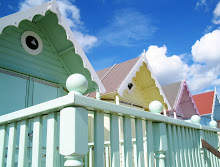Peter was born in Southampton on 16 February 1929 at the home of his mother’s parents. When he was a few weeks old, his father George and mother Muriel brought him back to their home in North Warnborough where they lived until moving to Odiham in 1932. The following year they moved again, to a house named ‘St Ives’, very close to the Grammar School where his father taught, and this was to be the Holmes family residence until after George’s death in 1984.
When he was 5, young Peter was asked by his parents how he liked the idea of having a brother or sister. Without hesitation, he decided he would prefer a sister, but on 2 July 1934 he was presented with a little brother, Tony. Peter marked the event by taking to his bed with measles! Luckily, Peter and Tony quickly became the best of playmates, and within a few years were constructing complicated games together with their extensive Meccano and Hornby clockwork train sets.
Two of Peter’s earliest memories reveal at what an early age two of his abiding interests were formed. When he was 4, he was desperate to be taken on a school outing with his father’s pupils to the Eastleigh Railway Works to see steam engines being made – sadly at the last minute it was discovered that very small children were not allowed. Peter howled with disappointment, crawled under the sideboard and wouldn’t come out for some time! At about the same age his favourite daily ritual was to look out on the road for the driver of the Thames Valley bus, who would pass on his motorbike en route to collecting his double-decker bus each morning. Thus, even before he went to school, Peter’s great love of railways and buses was already firmly established.
Peter started at Buryfield’s Infant School in April 1934, and soon became crayon monitor – but this early position of responsibility was terminated when he dropped a boxful of crayons down the neck of one of his small classmates. At Christmas 1935, he starred in the school pantomime as Little Jack Horner – giving him a taste for amateur dramatics which he explored further in his twenties and thirties.
When he was 7, Peter moved to the London Road Boys’ School in Odiham and at the age of 8 he started piano lessons. It was while walking to his piano teacher’s house that he first noticed a little girl, whose lesson was immediately before his, cycling past him in the opposite direction on her way home. He thought she was very pretty, and decided that the best way to express his admiration was to take a swipe at her with his music case, or alternatively, as the weeks went by, to poke sticks into her bicycle wheels to try to make her fall off. The pretty girl’s name was Valmai Deane. For Val, at least, it was most definitely NOT a case of love at first sight! Far from it! In fact, she complained bitterly to her mother about the behaviour of that dreadful boy Peter Holmes, to the point where her mother vowed to go and ‘have a word with his father’!
At the age of 10 it was time to move on to secondary school. Since his father taught at Odiham Grammar School, it was decided that Peter should go to Farnham Grammar School instead. Plans for the start of the autumn term were thrown into disarray by the outbreak of war on 3 September that year, but once the school had built an air-raid shelter, lessons resumed. School proceeded relatively smoothly through the war, with Peter and his great friend Jeffrey Bunting vying with one another to be top of the class.
Out of school, Peter’s spare time was largely devoted to his interest in trains and buses. He always remembered the day the signalman at Hook Railway Station invited him into his box and he spent a fascinating few hours watching the indicators and pulling the levers to signal trains along the main line. Many hours and scores of exercise books were taken up with compiling lists of bus and train information, all set out in Peter’s uniquely legible handwriting, and some half-century later, much of the material he accumulated was contributed to the publications of the PSV Circle and the Omnibus Society.
After gaining distinctions and credits in his School Certificate, Peter moved into the Sixth Form, became a prefect, and was told by his Headmaster one day that he was to go to Cambridge. He duly obliged by gaining good marks in Higher School Certificate in Physics, Chemistry, Applied Maths and Pure Maths, and was awarded an Exhibition to Queens’ College, Cambridge. However, there were National Service obligations to fulfil before going up to university.
Peter reported for Army duty at Winchester Station on 16 October 1947. He was issued with his uniform and equipment ready for four weeks’ primary training. In the ‘mechanical aptitude tests’ to assess his suitability for technical training, rather than the infantry, Peter completely failed in the task of assembling a switched lamp socket from its component parts – a failure he quite cheerfully admitted and put down to having grown up in a gas-lit house. He was assigned to the Royal Signals and posted to Catterick for initial training. Subsequently he trained as a radio mechanic and was then retained on the permanent staff as an instructor, which brought with it the rank of Lance-Corporal and later Corporal. In his spare time Peter became involved in the Signals Theatre, and also made many excursions into the Yorkshire Dales by bicycle and bus. It was during this time that he developed a new interest – which was to result in the publication of his book on the subject two decades later – the Stockton and Darlington Railway.
In October 1949, Peter went up to Queens' College. In his first year he read Physics, Chemistry, Mathematics and Mineralogy and was accepted to read Physics for the Part II exam. He joined the Cambridge Intercollegiate Christian Union, his College’s debating society and the University Railway Club and developed a flair for punting on the River Cam which he was delighted to show off to his wife and daughters many years later.
Peter started work in the General Physics Section at the AEI Research Laboratory at Aldermaston Court in November 1952, which was devoted to the study of semiconductors. In 1953 he accompanied his mother to Buckingham Palace to see his father receive the OBE from the new Queen.
Through his work at Aldermaston, Peter soon became the local expert on X-ray crystallography, and his research work was published in academic journals. In 1955 he enrolled as a doctorate student at Reading University, and the techniques he was involved in developing at AIE, and the subject of his PhD, formed the basis for his first published book, ‘The Electrochemistry of Semiconductors’. On two occasions his research work was chosen as part of an AEI exhibit at a Royal Society Conversazione at Burlington House in London – an annual white-tie-and-tails occasion attended by the world’s top scientists. He also presented papers at conferences at home and abroad.
During his years at Aldermaston, Peter was a founder member of the AEI choir and dramatic society. Back home in Odiham, he attended local dances and parties, and played tennis with his brother and friends. It was during this time, in the early to mid-1950s that he and Val became reacquainted. After a Christmas Eve party at the home of a mutual friend, Peter insisted on walking Val home to her parents’ house, Highfield, atop a hill just outside Odiham. Suffice to say that Peter expressed his admiration for Val in a fashion considerably more gallant and affectionate than he had done when they were children. No music cases or sticks were involved! They were married on 15th August 1958 in Odiham Church and set up home in Burghfield Common and early in 1960, Juliet was born.
In 1963, Aldermaston Court was closed down. Peter’s was offered a position with the Royal Aircraft Establishment at its outstation at Ambarrow Court, to work in a new Semiconductor Group. With Val and Juliet, he moved from Burghfield Common to St Michael’s Road in Sandhurst. Just two months later, Catherine was born – delivered at home with the family doctor, David Bryant, in attendance – and baptised a few months later at St Michael’s Church.
Following a request from Space Department, Peter started to specialise in the physical causes of failure of semiconductor components. Every transistor rejected by Space Department was sent to Peter for dissection and analysis. When the UK3 Prospero Satellite went into service, his report on transistor production defects resulted in the publication of a code of practice to be used in every subsequent satellite, which was ultimately adopted by NATO for all its suppliers (and Prospero was still working 30 years after its launch!)
In 1969 Ambarrow Court was closed and Peter’s work moved to the main site at RAE in Farnborough. His section took over the rapidly developing field of ‘thick film electronic technology’. Following his keynote address at a conference in 1971, Peter was invited to edit a book on the subject. ‘A Handbook of Thick Film Technology’ was published in 1975 and remains, in its 2nd edition, the standard reference book on the subject today.
Towards the end of his time at RAE, Peter took up an offer to give a series of lectures on semiconductors at Reading University, and his position as Visiting Lecturer continued for 19 years, until after his retirement. Around this time, one of Peter’s papers resulted in his being awarded the prestigious Heinrich Hertz Premium by the Institute of Electronic and Radio Engineers.
In 1974 Peter began the final phase of his working life at the Ministry of Defence in London as Secretary of the MOD’s Electronic Research Council – an august body set up to bring the experience of the country’s top scientists to bear on the wide range of electronic research undertaken by the ministry’s establishments and contractors. His arrival at the MOD coincided with the launch of a major review of maritime air warfare, in which he was much involved.
Despite his busy working life, he continued to research and write for pleasure, and in 1975 Peter’s book on the Stockton and Darlington Railway was published to coincide with the 150th anniversary of the line.
In 1978 Peter opted to move to a completely different area at the MOD and started at the DLRAT, based in New Oxford Street, where he headed a section dealing with defensive aids for RAF and Army aircraft. His role involved organising and chairing numerous meetings with the manufacturers of multi-million pound radar and early warning systems. During this time he travelled widely. His most lengthy trip was an extended tour of the US which included a high-level briefing in the Pentagon.
One perk of working in the MOD was the annual ballot for seats at Trooping the Colour, or its dress rehearsal. In 1982 Peter won a pair of tickets for the rehearsal and he and Val enjoyed a sunny day on the grandstand – the only thing missing was the Queen!
In his final two years at work, Peter was involved in the procurement of American equipment for Hercules and then, in accordance with Civil Service rules, he retired on the eve of his 60th birthday, but remained active in his specialist field by accepting the invitation to take on a party-time consultancy at Ferranti in Bracknell.
Unlike many upon retirement, Peter was never at a loss as to how to fill his time! Quite the reverse. His interests and community involvement burgeoned and his family and friends always marvelled at the enormous amount he packed into every single day after he stopped having to commute to London.
He and Val travelled widely during these years, both at home and abroad, making the fullest possible use of their National Trust and Royal Horticultural Membership cards to visit historic houses, gardens, flower shows and festivals, cathedrals, churches, sites of archaeological interest and, of course, the routes of disused railway lines, axed by Dr Beeching, occasions always marked by Peter with a symbolic but heartfelt ‘sniff’.
During his retirement Peter also added to his growing list of published books with volumes on the history of Robert May’s Schools at Odiham, various aspects of the Aldershot and District Bus Company, and the Nancy Bus Company as well as writing numerous articles on buses and local history for magazines and journals, including the Hampshire Magazine.
He continued his research into his and Val’s family history, too – a role which he entrusted this summer to his grand-daughter Olivia.
He was an active member of the Aldershot and District Bus Interest Group; the Sandhurst Historical Society and the Sandhurst Museum Committee; the Odiham Society; the Odiham Grammar School Old Scholars’ Association and the Old Farnhamians Association; and he was Chair of the Bracknell Forest Heritage Forum Committee. In 2009 he was presented with the Sandhurst Town Council Community Award at the annual Civic Service.
And of course, retirement gave Peter more time in which to serve the Church of St Michael and All Angels, where he was, together with Val, a regular and committed member of the congregation for 46 years. To mention ALL that he did for and in the church in Sandhurst would take too long, but at the time of his death he was Lay Vice-Chairman of the PCC; Chairman of the Social Committee; a Sidesman and co-ordinator of the sidesman rota; a Eucharistic minister; Church Historian; a lesson reader and occasional verger; he sang in the choir when extra basses were required for special services or performances; and was a former churchwarden. He organised Heritage Open Day tours of the church and churchyard; he had been involved in churchyard maintenance since the early 1970s (in fact it was Peter and Val who, when hacking away at the front hedge one day, discovered that there was actually a wall beneath, which, with much further hard work over weeks and months, they gradually revealed to its present state); he was Secretary of Pledged Giving, formerly the Stewardship Campaign, in which he played a key role since its inception in 1964. He was a man of steadfast personal faith, which was evident both in his practical action and organisation on the Church’s behalf and in the wise counsel he offered to those who sought his help, whether on an ecclesiastical, administrative or personal level.
Peter achieved so much in his long life. Yet all of it characteristically understated, achieved efficiently but without any fuss or, as he would have put it ‘making a song and dance about things’. He was quietly proud of many of his achievements, but unfailingly modest in public and never self-congratulatory, except in his choice of wife – which he regarded as his greatest triumph by a long chalk. His pride in, and devotion to, his daughters and their families, his brother and sister-in-law, his niece and nephew and their families, too, was unstinting. Family always came first with Peter.
Perhaps the words of others, on hearing the news of his passing, provide the best tributes to his unique character and to the loss we feel:
‘An inspiration and a fount of both knowledge and wisdom to all who knew him.’
‘A rock-solid pillar of the church.’
‘A true elder of the community.’
‘Meticulous and measured – a safe pair of hands.’
‘A lovely, gentle, gentleman.’
‘A remarkable man of wisdom, wit and good counsel.’
‘Kind and considerate.’
and . . .
‘A wonderful example of a life so well spent for us to try to emulate.’


















































3 comments:
That's lovely. My condolences to you.
Deepest sympathy from me, too, Juliet.
What a lovely father you had. Condolences from me too.
Post a Comment